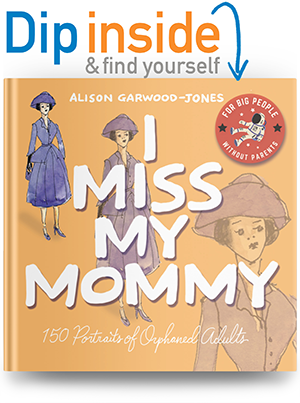Where does content live?
November 30, 2015
 Don’t knock on one door, knock on all. Illustration by Alison Garwood-Jones
Don’t knock on one door, knock on all. Illustration by Alison Garwood-Jones
Creativity has always been an insistent force in me. But, these days I spend as much time studying the processes for sharing my work as I do making stuff.
Tell me if you’ve thought this too: Hemingway, O’Keefe and Auden weren’t yanked around by technology. They lived at a time when artists could just get on with the business of making. How they got their stuff in front of the public involved the same set-ups and follow-throughs used by creative souls before them and for decades after them. Sure, the usual stuff of life divided their energies — relationship dramas, solvency issues, rejection, war — but the New York mailing address for Scribner’s Sons was solid. And the configuration of the exhibition spaces at Alfred Stieglitz’s 291 Gallery was a constant for all artists who dared to pitch their stuff to the old man.
Today, just when you master one way of getting your stuff seen, a new strategy replaces it with changes that could either tip us over or wipe us out. Fifteen years ago, Hemingway’s strategy of crafting and feeding pitches to editors was still the way to go. A dozen years ago, blogging took over. That lasted for another decade before readers’ habits changed again. Blogs, like magazines, were built around the idea of tightly controlled media consumption. Remember how we all aspired to be “Master Curators” of “destination” websites? Come to us, we said, every time we included a web throw on our business cards or email signatures. Keep us in your conscience. Please. While it took a while, writers and brands eventually learned to assign their blog URLs the same canonical importance once reserved for print. But the readers didn’t care. They had already moved on again. In case you’re wondering why, it’s because they don’t have the patience to wait for our websites to upload on their phone screens.
Right now, destination websites are out and “distributed content” is in. Sites like Buzzfeed have already cut the coded string that used to bundle their content exclusively inside their websites and scattered their stories across a whole array of native mobile apps and social media feeds. What does this mean for the rest of us? It means that the most adaptable publishers, big and small, are taking their content and going where their readers are instead of trying to call them back to their websites for the full story.
If you want to learn more, read Buzzfeed EIC Jonah Peretti’s conversation with Nilay Patel published in The Verge last December. Tara Hunt describes our current state of affairs (the demise of destination websites and the primacy of shareable content) in this beautifully simple LinkedIn post and video.
Both Peretti and Hunt inspired me to dust off my graphic storytelling skills. For writers and magazine publishers, the prospect of losing our permanent homes is ulcer-inducing.
Here is my YouTubey take on our new reality:



























Similar to how the nuclear family has become the extended family, the nuclear concept of content revolving around a single URL has now been extended likewise. I think the “No place like home” notion has been replaced with “Home is my smart phone”
Great video Alison :)
Thanks, Darryl! I appreciate your feedback.